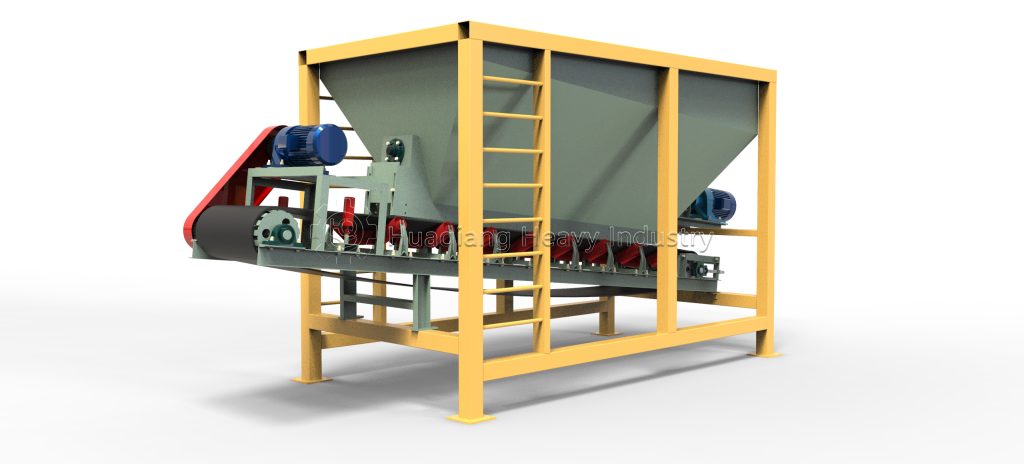
Definition
A loader feeding hopper is specially designed equipment in fertilizer production lines for receiving materials from front-end loaders. This steel structure typically features a 3-5m wide opening and 10-30m³ capacity, able to receive a full loader bucket at once, serving as a critical link between storage and production systems[1].The loader feeding bin supplies raw materials to the NPK production line for fertilizer manufacturing.
Core Functions and Value
- High-efficiency receiving: Directly accepts loader-delivered materials at 50-100 tons/hour
- Buffer storage: Provides 4-8 hours production buffer for continuous operation
- Primary screening: Equipped with 50-100mm grizzly bars to remove oversize contaminants
- Uniform feeding: Ensures steady material supply via vibratory feeders or belt conveyors
Strategic Position in Production Line
Loader feeding hoppers are positioned at the very front of raw material receiving section, whose performance directly impacts overall system stability. They primarily handle base materials like MAP, potash, urea, and various organic materials in organic fertilizer production[2].
Modern Design Features
- Sloped walls: 55-60° inclination prevents material buildup
- Wear-resistant liners: 16Mn steel plates extend service life 3-5 times
- Environmental design: Pulse-jet dust collectors maintain emissions <20mg/m³
- Smart monitoring: Optional level sensors and automatic weighing systems
Operation and Safety Protocols
Key operational considerations:
- Precise loader positioning over feed opening
- Regular inspection of screens and wall wear
- Monitoring material flow to prevent bridging
- Maintaining proper dust collection system operation
- Thorough cleaning between different materials to avoid cross-contamination
References:
[1] “Modern Fertilizer Production Equipment Manual”, Chemical Industry Press, 2021 [2] IFDC Technical Report “Best Practices in Fertilizer Raw Material Handling”, 2022 [3] European Machinery Safety Standard EN 12042:2020




